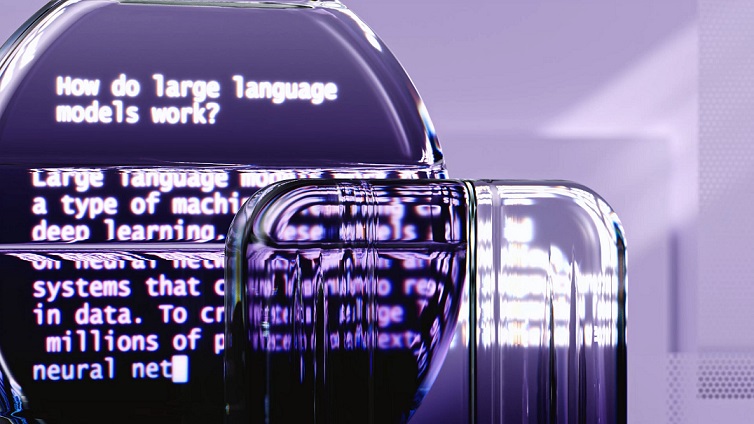Artificial Intelligence (AI) has been a topic of discussion across a variety of industries for decades, with many viewing the technology as a way to improve operational efficiencies and revolutionize how business is conducted in the modern world.
AI refers to the ability of machines to perform tasks that would typically require human intelligence, such as those involving problem-solving and decision-making. This can range from simple jobs like data entry and analysis to more complex processes like image and speech recognition.
According to a report by IBM, 34% of companies currently use AI and an additional 42% are exploring AI. And nearly 30% of IT professionals say their colleagues are using AI and automation tools to save time.
This interest in AI grew even greater once generative AI platforms that could create content from a simple user prompt burst onto the scene in 2022. ChatGPT reached 100 million users faster than any other app and, by early 2023, the chat.openai.com website saw an average of 25 million daily visitors. It is predicted that more than 20% of all Americans will use ChatGPT at least once per month this year.
AI and generative AI have become mainstays in the headlines as research budgets have grown and corporate leaders, governments, educational institutions and everyday people use the technology and develop new ways to capitalize on its promise.
What are the Difference Between AI and Generative AI?
In short, traditional AI solves specific tasks with predefined rules while generative AI focuses on creating new content and data. Whereas traditional AI employs supervised learning and discriminative models, generative AI uses unsupervised learning and generative models.
In other words, traditional AI excels at pattern recognition, while generative AI excels at pattern creation.
Traditional AI
Traditional AI is a subset of artificial intelligence that focuses on performing preset tasks using predetermined algorithms and rules. The systems are typically trained on large datasets and learn to identify patterns in the data and use those patterns to make predictions or generate outputs. The AI is only as effective as the data used to train the algorithm.
Traditional AI is designed to excel in a single activity or a restricted set of tasks. Examples of popular AIs are automatic speech recognition technologies (ASR) and voice assistants like Siri or Alexa, recommendation engines on Netflix or Amazon or Google’s search algorithm. All of these have been trained to follow specific rules in providing useful information but do not create anything new.
While traditional AI is still widely used, generative AI is rapidly becoming the preferred technology for many.
Generative AI
The key difference between traditional and generative AI is that generative AI can create something new. Gen AI systems, like ChatGPT and DALL-E, can produce text, video, images and other types of content.
Generative AI models rely on machine learning and are fed large amounts of existing content to train the models to produce new content. They learn to identify underlying patterns in the inputted data based on a probability distribution and, when given a prompt, create similar patterns or outputs based on the data it has analyzed.
Gen AI typically does well in scenarios that require creativity or data augmentation. It’s valuable in generating art, music and personalized content as well as filling in missing data and simulating scenarios where real data is limited.

Not Mutually Exclusive
Though there are differences between the two, traditional AI and generative AI can support each other with effective results.
“While traditional AI and generative AI have distinct functionalities, they are not mutually exclusive,” wrote author Bernard Marr. “Generative AI could work in tandem with traditional AI to provide even more powerful solutions. For instance, a traditional AI could analyze user behavior data, and a generative AI could use this analysis to create personalized content.”
The Challenges of AI
Although recognized for its potential in boosting business operations and automating tasks, AI is not without its concerns.
Traditional AI, for instance, is limited to its programmed rules and lacks adaptability. In new or unexpected situations, it may not produce the expected or desired outcomes or may require adjustments in training data to handle new scenarios.
Generative AI’s output also has been called into question, especially in regard to the accuracy of information that some generative AI tools return or the system’s ability to generate deepfake content. Though generative AI models are advancing, they still can make mistakes and produce incorrect answers, either via “hallucinations” or by demonstrating an “AI bias.”
Trust the Captioning and Transcription Leader
As a global leader in captioning and transcription and accessibility partner to more than 3,000 businesses and institutions, Verbit, VITAC’s parent company, is constantly innovating and keeping up with the latest access and technology trends, always with an eye toward improved customer experience.
We offer a variety of AI-driven captioning and transcription tools, all based on our advanced, proprietary technology. We own our AI engine, which gives us a noticeable edge in delivering customer-specific services and solutions. We train our engine with real customer data and customer transcripts. And it’s this vast collection of customer data that fuels our engine and enables us to provide the highest captioning and transcription accuracy.
This control of the training data also provides the foundation that powers our generative AI product suite, Gen.V, and enables Verbit to surpass the capabilities and outputs of generic engines.
Contact us for more information about Gen.V or any of our access solutions.




